Blog
Children and Blisters
 If you notice an area of skin on your child’s foot in the shape of what appears to be a small bubble, you are most likely looking at a blister. They are typically caused by excess friction that is placed on that portion of the skin, and this generally originates from wearing shoes or socks that are too tight. There may be additional reasons why blisters might occur, which may include allergic reactions, extreme burns, or insect bites. The body creates a natural defense mechanism to protect the affected area, and it’s important to tell your child to refrain from touching or popping the blister. If it should burst as a result of pressure that is applied to it, it is beneficial to wash the area with clean water, and this may possibly promote healing. If pain is caused by a blister that forms on your child’s foot, it is suggested that you seek the counsel of a podiatrist who can properly treat this condition.
If you notice an area of skin on your child’s foot in the shape of what appears to be a small bubble, you are most likely looking at a blister. They are typically caused by excess friction that is placed on that portion of the skin, and this generally originates from wearing shoes or socks that are too tight. There may be additional reasons why blisters might occur, which may include allergic reactions, extreme burns, or insect bites. The body creates a natural defense mechanism to protect the affected area, and it’s important to tell your child to refrain from touching or popping the blister. If it should burst as a result of pressure that is applied to it, it is beneficial to wash the area with clean water, and this may possibly promote healing. If pain is caused by a blister that forms on your child’s foot, it is suggested that you seek the counsel of a podiatrist who can properly treat this condition.
Blisters are prone to making everyday activities extremely uncomfortable. If your feet are hurting, contact one of our podiatrists of James Kutchback, DPM, CWS-P. Our doctors can provide the care you need to keep you pain-free and on your feet.
Foot Blisters
Foot blisters develop as a result of constantly wearing tight or ill-fitting footwear. This happens due to the constant rubbing from the shoe, which can often lead to pain.
What Are Foot Blisters?
A foot blister is a small fluid-filled pocket that forms on the upper-most layer of the skin. Blisters are filled with clear fluid and can lead to blood drainage or pus if the area becomes infected.
How Do Blisters Form?
Blisters on the feet are often the result of constant friction of skin and material, usually by shoe rubbing. Walking in sandals, boots, or shoes that don’t fit properly for long periods of time can result in a blister. Having consistent foot moisture and humidity can easily lead to blister formation.
Prevention & Treatment
It is important to properly care for the affected area in order to prevent infection and ease the pain. Do not lance the blister and use a Band-Aid to provide pain relief. Also, be sure to keep your feet dry and wear proper fitting shoes. If you see blood or pus in a blister, seek assistance from a podiatrist.
If you have any questions, please feel free to contact our offices located in The Woodlands and Woodville, TX . We offer the newest diagnostic and treatment technologies for all your foot care needs.
Dancers and Athletes May Be Prone to Cuboid Syndrome
 The medical condition that is referred to as cuboid syndrome occurs when an injury happens that affects the cuboid bone and surrounding joints and ligaments. It is one of the seven tarsal bones, and the pain that is often associated with this syndrome is typically felt in the middle of the foot or at the bottom of the fourth and fifth toes. The bones in this area of the foot may become displaced or out of alignment and can be the result of overuse or an injury. There are specific symptoms that may be experienced with this ailment, including increased pain while walking, possible swelling, or a reduced range of motion. Anyone can incur this type of injury, even though it may be more common among athletes and dancers. These types of professions may engage in rapid side-to-side movements, which may incur damage to the cuboid bone and surrounding areas. If you have pain in the middle or on the outside of your foot, it is strongly suggested to consult with a podiatrist who can properly determine the cause.
The medical condition that is referred to as cuboid syndrome occurs when an injury happens that affects the cuboid bone and surrounding joints and ligaments. It is one of the seven tarsal bones, and the pain that is often associated with this syndrome is typically felt in the middle of the foot or at the bottom of the fourth and fifth toes. The bones in this area of the foot may become displaced or out of alignment and can be the result of overuse or an injury. There are specific symptoms that may be experienced with this ailment, including increased pain while walking, possible swelling, or a reduced range of motion. Anyone can incur this type of injury, even though it may be more common among athletes and dancers. These types of professions may engage in rapid side-to-side movements, which may incur damage to the cuboid bone and surrounding areas. If you have pain in the middle or on the outside of your foot, it is strongly suggested to consult with a podiatrist who can properly determine the cause.
Cuboid syndrome, also known as cuboid subluxation, occurs when the joints and ligaments near the cuboid bone in the foot become torn. If you have cuboid syndrome, consult with one of our podiatrists from James Kutchback, DPM, CWS-P. Our doctors will assess your condition and provide you with quality foot and ankle treatment.
Cuboid syndrome is a common cause of lateral foot pain, which is pain on the outside of the foot. The condition may happen suddenly due to an ankle sprain, or it may develop slowly overtime from repetitive tension through the bone and surrounding structures.
Causes
The most common causes of cuboid syndrome include:
- Injury – The most common cause of this ailment is an ankle sprain.
- Repetitive Strain – Tension placed through the peroneus longus muscle from repetitive activities such as jumping and running may cause excessive traction on the bone causing it to sublux.
- Altered Foot Biomechanics – Most people suffering from cuboid subluxation have flat feet.
Symptoms
A common symptom of cuboid syndrome is pain along the outside of the foot which can be felt in the ankle and toes. This pain may create walking difficulties and may cause those with the condition to walk with a limp.
Diagnosis
Diagnosis of cuboid syndrome is often difficult, and it is often misdiagnosed. X-rays, MRIs and CT scans often fail to properly show the cuboid subluxation. Although there isn’t a specific test used to diagnose cuboid syndrome, your podiatrist will usually check if pain is felt while pressing firmly on the cuboid bone of your foot.
Treatment
Just as the range of causes varies widely, so do treatments. Some more common treatments are ice therapy, rest, exercise, taping, and orthotics.
If you have any questions, please feel free to contact our offices located in The Woodlands and Woodville, TX . We offer the newest diagnostic and treatment technologies for all your foot care needs.
Changes in the Feet During Pregnancy
 When pregnancy occurs in many women, the body undergoes temporary changes. These may occur in the feet, and she may notice that her feet look differently. The differences may include the disappearance of the arch as the body’s weight increases, leading to the condition that is known as flat feet, in addition to swollen feet and ankles. The skin on the heels can become dry, which may be connected to cracked heels. Hormonal changes can precede hot or burning sensations in the feet and may be enhanced if the mother-to-be is sleep deprived. It may be beneficial to elevate the feet, which may reduce a portion of the swelling, incorporating a gentle exercise program in the daily routine, and drinking plenty of fresh water every day. If you would like additional information about how the feet can become affected as a result of being pregnant, please consult with a podiatrist.
When pregnancy occurs in many women, the body undergoes temporary changes. These may occur in the feet, and she may notice that her feet look differently. The differences may include the disappearance of the arch as the body’s weight increases, leading to the condition that is known as flat feet, in addition to swollen feet and ankles. The skin on the heels can become dry, which may be connected to cracked heels. Hormonal changes can precede hot or burning sensations in the feet and may be enhanced if the mother-to-be is sleep deprived. It may be beneficial to elevate the feet, which may reduce a portion of the swelling, incorporating a gentle exercise program in the daily routine, and drinking plenty of fresh water every day. If you would like additional information about how the feet can become affected as a result of being pregnant, please consult with a podiatrist.
Pregnant women with swollen feet can be treated with a variety of different methods that are readily available. For more information about other cures for swollen feet during pregnancy, consult with one of our podiatrists from James Kutchback, DPM, CWS-P. Our doctors will attend to all of your foot and ankle needs.
What Foot Problems Can Arise During Pregnancy?
One problem that can occur is overpronation, which occurs when the arch of the foot flattens and tends to roll inward. This can cause pain and discomfort in your heels while you’re walking or even just standing up, trying to support your baby.
Another problem is edema, or swelling in the extremities. This often affects the feet during pregnancy but tends to occur in the later stages.
How Can I Keep My Feet Healthy During Pregnancy?
- Wearing orthotics can provide extra support for the feet and help distribute weight evenly
- Minimize the amount of time spent walking barefoot
- Wear shoes with good arch support
- Wear shoes that allow for good circulation to the feet
- Elevate feet if you experience swelling
- Massage your feet
- Get regular, light exercise, such as walking, to promote blood circulation to the feet
If you have any questions, please feel free to contact our offices located in The Woodlands and Woodville, TX . We offer the newest diagnostic and treatment technologies for all your foot care needs.
How to Care for Corns
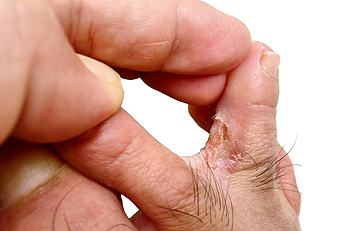 If you have developed a corn, it has most likely formed to protect the skin that may have been affected from wearing shoes that fit improperly. These types of shoes may cause the skin on one toe to rub together with the toe that is next to it. The body’s natural defense mechanism is to form a corn, which may help to shelter the skin of the affected toe. Moderate relief may be found in wearing a protective pad or cushion, which may aid in alleviating a portion of the pain and discomfort that is often associated with corns. If you experience any swelling, redness, or warmth surrounding the corn, it is suggested to speak to a podiatrist who can properly guide you in determining a correct diagnosis.
If you have developed a corn, it has most likely formed to protect the skin that may have been affected from wearing shoes that fit improperly. These types of shoes may cause the skin on one toe to rub together with the toe that is next to it. The body’s natural defense mechanism is to form a corn, which may help to shelter the skin of the affected toe. Moderate relief may be found in wearing a protective pad or cushion, which may aid in alleviating a portion of the pain and discomfort that is often associated with corns. If you experience any swelling, redness, or warmth surrounding the corn, it is suggested to speak to a podiatrist who can properly guide you in determining a correct diagnosis.
Corns can make walking very painful and should be treated immediately. If you have questions regarding your feet and ankles, contact one of our podiatrists of James Kutchback, DPM, CWS-P. Our doctors will treat your foot and ankle needs.
Corns: What Are They? And How Do You Get Rid of Them?
Corns are thickened areas on the skin that can become painful. They are caused by excessive pressure and friction on the skin. Corns press into the deeper layers of the skin and are usually round in shape.
Ways to Prevent Corns
There are many ways to get rid of painful corns such as:
- Wearing properly fitting shoes that have been measured by a professional
- Wearing shoes that are not sharply pointed or have high heels
- Wearing only shoes that offer support
Treating Corns
Although most corns slowly disappear when the friction or pressure stops, this isn’t always the case. Consult with your podiatrist to determine the best treatment option for your case of corns.
If you have any questions, please feel free to contact our offices located in The Woodlands and Woodville, TX . We offer the newest diagnostic and treatment technologies for all your foot care needs.
Is Toenail Fungus Contagious?
 If you notice your toenails becoming thick and turning a yellowish shade, you may have what is referred to as toenail fungus. Research has shown this fungus may attack nails that have incurred damage, which may have been the result of a weakened immune system, in addition to patients who have diabetes or poor circulation. The symptoms in severe cases of toenails fungus may include pain that is felt in the nail area when shoes are worn, extreme cracks in the skin or an itching feeling in the area surrounding the toenail. This type of fungus is contagious, and it thrives in warm and moist areas that typically include public pools, communal showers, or locker rooms. If you are frequently in these types of places, it is suggested to wear appropriate shoes, which may aid in the prevention of toenail fungus. If you feel you may have this unsightly condition, it is advised to consult with a podiatrist who can offer proper treatment options.
If you notice your toenails becoming thick and turning a yellowish shade, you may have what is referred to as toenail fungus. Research has shown this fungus may attack nails that have incurred damage, which may have been the result of a weakened immune system, in addition to patients who have diabetes or poor circulation. The symptoms in severe cases of toenails fungus may include pain that is felt in the nail area when shoes are worn, extreme cracks in the skin or an itching feeling in the area surrounding the toenail. This type of fungus is contagious, and it thrives in warm and moist areas that typically include public pools, communal showers, or locker rooms. If you are frequently in these types of places, it is suggested to wear appropriate shoes, which may aid in the prevention of toenail fungus. If you feel you may have this unsightly condition, it is advised to consult with a podiatrist who can offer proper treatment options.
For more information about treatment, contact one of our podiatrists of James Kutchback, DPM, CWS-P. Our doctors can provide the care you need to keep you pain-free and on your feet.
Toenail Fungus Treatment
Toenail fungus is a condition that affects many people and can be especially hard to get rid of. Fortunately, there are several methods to go about treating and avoiding it.
Antifungals & Deterrence
Oral antifungal medicine has been shown to be effective in many cases. It is important to consult with a podiatrist to determine the proper regiment for you, or potentially explore other options.
Applying foot powder on the feet and shoes helps keep the feet free of moisture and sweat.
Sandals or open toed shoes – Wearing these will allow air movement and help keep feet dry. They also expose your feet to light, which fungus cannot tolerate. Socks with moisture wicking material also help as well.
If you have any questions please contact our offices located in The Woodlands and Woodville, TX . We offer the newest diagnostic and treatment technologies for all your foot and ankle needs.
Diabetes and Neuropathy
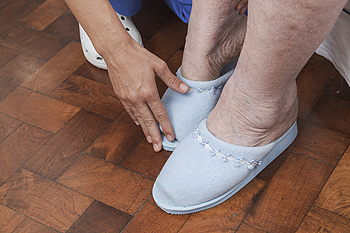 The definition of neuropathy is nerve damage, and it may be a result of many medical conditions that may be present. There are several symptoms that may be indicative of this condition, including tingling in the feet, burning sensations, or extreme sensitivity or pain when touched. Additionally, many patients are aware of muscle weakness and may find it difficult to urinate. Neuropathy may develop as a result of elevated sugar levels in the blood, and research has shown that diabetes accounts for sixty percent of neuropathy issues. If you are a diabetic patient and are experiencing any of these symptoms, it is strongly suggested to confer with a podiatrist who can perform a proper diagnosis and determine the best course of treatment for you.
The definition of neuropathy is nerve damage, and it may be a result of many medical conditions that may be present. There are several symptoms that may be indicative of this condition, including tingling in the feet, burning sensations, or extreme sensitivity or pain when touched. Additionally, many patients are aware of muscle weakness and may find it difficult to urinate. Neuropathy may develop as a result of elevated sugar levels in the blood, and research has shown that diabetes accounts for sixty percent of neuropathy issues. If you are a diabetic patient and are experiencing any of these symptoms, it is strongly suggested to confer with a podiatrist who can perform a proper diagnosis and determine the best course of treatment for you.
Neuropathy
Neuropathy can be a potentially serious condition, especially if it is left undiagnosed. If you have any concerns that you may be experiencing nerve loss in your feet, consult with one of our podiatrists from James Kutchback, DPM, CWS-P. Our doctors will assess your condition and provide you with quality foot and ankle treatment for neuropathy.
What Is Neuropathy?
Neuropathy is a condition that leads to damage to the nerves in the body. Peripheral neuropathy, or neuropathy that affects your peripheral nervous system, usually occurs in the feet. Neuropathy can be triggered by a number of different causes. Such causes include diabetes, infections, cancers, disorders, and toxic substances.
Symptoms of Neuropathy Include:
- Numbness
- Sensation loss
- Prickling and tingling sensations
- Throbbing, freezing, burning pains
- Muscle weakness
Those with diabetes are at serious risk due to being unable to feel an ulcer on their feet. Diabetics usually also suffer from poor blood circulation. This can lead to the wound not healing, infections occurring, and the limb may have to be amputated.
Treatment
To treat neuropathy in the foot, podiatrists will first diagnose the cause of the neuropathy. Figuring out the underlying cause of the neuropathy will allow the podiatrist to prescribe the best treatment, whether it be caused by diabetes, toxic substance exposure, infection, etc. If the nerve has not died, then it’s possible that sensation may be able to return to the foot.
Pain medication may be issued for pain. Electrical nerve stimulation can be used to stimulate nerves. If the neuropathy is caused from pressure on the nerves, then surgery may be necessary.
If you have any questions, please feel free to contact our offices located in The Woodlands and Woodville, TX . We offer the newest diagnostic and treatment technologies for all your foot care needs.
Symptoms of Poor Circulation In the Feet
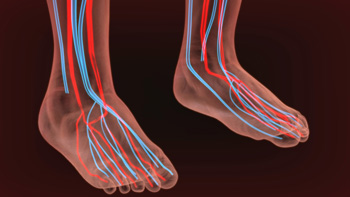 Research has indicated that high blood sugar levels may be a common reason for poor circulation to occur in diabetic patients. Diabetes may cause blood vessels to gradually become damaged, and this may lead to decreased circulation. There are several symptoms that are associated with this condition, including a loss of sensation, which may begin with a feeling of pins and needles in the lower extremities; an awareness of hot or cold temperatures in the feet; or a decreased pain level, which may make it difficult to notice any sores or wounds. There are certain measures that may be taken to possibly prevent or help this ailment, including performing mild exercises and stretching techniques, wearing supportive shoes and socks, and keeping your cholesterol and blood pressure at normal levels. If you believe you have poor circulation, it is advised to speak with a podiatrist who can determine what the best course of treatment is for you.
Research has indicated that high blood sugar levels may be a common reason for poor circulation to occur in diabetic patients. Diabetes may cause blood vessels to gradually become damaged, and this may lead to decreased circulation. There are several symptoms that are associated with this condition, including a loss of sensation, which may begin with a feeling of pins and needles in the lower extremities; an awareness of hot or cold temperatures in the feet; or a decreased pain level, which may make it difficult to notice any sores or wounds. There are certain measures that may be taken to possibly prevent or help this ailment, including performing mild exercises and stretching techniques, wearing supportive shoes and socks, and keeping your cholesterol and blood pressure at normal levels. If you believe you have poor circulation, it is advised to speak with a podiatrist who can determine what the best course of treatment is for you.
While poor circulation itself isn’t a condition; it is a symptom of another underlying health condition you may have. If you have any concerns with poor circulation in your feet contact one of our podiatrists of James Kutchback, DPM, CWS-P. Our doctors will treat your foot and ankle needs.
Poor Circulation in the Feet
Peripheral artery disease (PAD) can potentially lead to poor circulation in the lower extremities. PAD is a condition that causes the blood vessels and arteries to narrow. In a linked condition called atherosclerosis, the arteries stiffen up due to a buildup of plaque in the arteries and blood vessels. These two conditions can cause a decrease in the amount of blood that flows to your extremities, therefore resulting in pain.
Symptoms
Some of the most common symptoms of poor circulation are:
- Numbness
- Tingling
- Throbbing or stinging pain in limbs
- Pain
- Muscle Cramps
Treatment for poor circulation often depends on the underlying condition that causes it. Methods for treatment may include insulin for diabetes, special exercise programs, surgery for varicose veins, or compression socks for swollen legs.
As always, see a podiatrist as he or she will assist in finding a regimen that suits you. A podiatrist can also prescribe you any needed medication.
If you have any questions, please feel free to contact our offices located in The Woodlands and Woodville, TX . We offer the newest diagnostic and treatment technologies for all your foot care needs.
Simple Steps to Implement Proper Foot Care
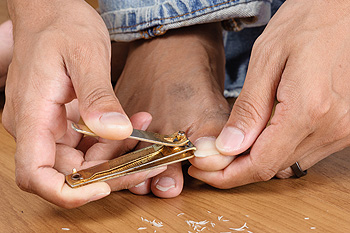 The importance of implementing daily foot care may be crucial to the overall health of the body. It may be easy to overlook the simple care the feet desire when poorly fitting shoes are worn, in addition to the feet possibly being enveloped in tight and sweaty socks for most of the day. The feet endure the weight from the entire body and may become injured as a result of the impact from daily walking. Research has shown the feet will generally feel better when they are washed and dried daily, followed by utilizing a good moisturizer, especially in the winter months. Shoes that are chosen should feel comfortable when they are initially tried on and shoes that do not have adequate arch support should be avoided. Additionally, there are conditions that may affect your feet, including diabetes, pregnancy, and the aging process and it is beneficial to consult with a podiatrist to discuss the changes in foot structure that may occur.
The importance of implementing daily foot care may be crucial to the overall health of the body. It may be easy to overlook the simple care the feet desire when poorly fitting shoes are worn, in addition to the feet possibly being enveloped in tight and sweaty socks for most of the day. The feet endure the weight from the entire body and may become injured as a result of the impact from daily walking. Research has shown the feet will generally feel better when they are washed and dried daily, followed by utilizing a good moisturizer, especially in the winter months. Shoes that are chosen should feel comfortable when they are initially tried on and shoes that do not have adequate arch support should be avoided. Additionally, there are conditions that may affect your feet, including diabetes, pregnancy, and the aging process and it is beneficial to consult with a podiatrist to discuss the changes in foot structure that may occur.
Everyday foot care is very important to prevent infection and other foot ailments. If you need your feet checked, contact one of our podiatrists from James Kutchback, DPM, CWS-P. Our doctors can provide the care you need to keep you pain-free and on your feet.
Everyday Foot Care
Often, people take care of their bodies, face and hair more so than they do for their feet. But the feet are a very important aspect of our bodies, and one that we should pay more attention to. Without our feet, we would not be able to perform most daily tasks.
It is best to check your feet regularly to make sure there are no new bruises or cuts that you may not have noticed before. For dry feet, moisturizer can easily be a remedy and can be applied as often as necessary to the affected areas. Wearing shoes that fit well can also help you maintain good foot health, as well as making it easier to walk and do daily activities without the stress or pain of ill-fitting shoes, high heels, or even flip flops. Wearing clean socks with closed shoes is important to ensure that sweat and bacteria do not accumulate within the shoe. Clean socks help to prevent Athlete’s foot, fungi problems, bad odors, and can absorb sweat.
If you have any questions, please feel free to contact our offices located in The Woodlands and Woodville, TX . We offer the newest diagnostic and treatment technologies for all your foot care needs.
How to Prevent Foot Injuries
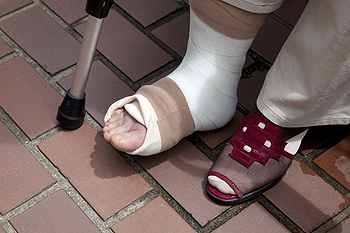 People who enjoy the sport of running or who participate in jumping activities may know the importance of preventing injuries that may occur to the foot and ankle. Research has shown when the muscles are properly stretched and warmed up prior to engaging in sporting activities, the possibility of incurring this type of injury may be diminished. It is generally beneficial to wear shoes that are designed for your foot structure, and this may aid in maintaining stability and comfort. When the heels of the shoes wear out from frequent running, replacement should occur as quickly as possible, and this may prevent unwanted injuries from occurring. If a minor injury should happen, resting the foot for the proper amount of time may aid in resuming your sport of choice. If you have endured an injury to the foot or ankle, it is suggested to speak with a podiatrist, so proper treatment options can be discussed.
People who enjoy the sport of running or who participate in jumping activities may know the importance of preventing injuries that may occur to the foot and ankle. Research has shown when the muscles are properly stretched and warmed up prior to engaging in sporting activities, the possibility of incurring this type of injury may be diminished. It is generally beneficial to wear shoes that are designed for your foot structure, and this may aid in maintaining stability and comfort. When the heels of the shoes wear out from frequent running, replacement should occur as quickly as possible, and this may prevent unwanted injuries from occurring. If a minor injury should happen, resting the foot for the proper amount of time may aid in resuming your sport of choice. If you have endured an injury to the foot or ankle, it is suggested to speak with a podiatrist, so proper treatment options can be discussed.
Foot and ankle trauma is common among athletes and the elderly. If you have concerns that you may have experienced trauma to the foot and ankle, consult with one of our podiatrists from James Kutchback, DPM, CWS-P. Our doctors will assess your condition and provide you with quality foot and ankle treatment.
Foot and ankle trauma cover a range of injuries all over the foot; common injuries include:
- Broken bones
- Muscle strains
- Injuries to the tendons and ligaments
- Stress fractures
Symptoms
Symptoms of foot and ankle injuries vary depending on the injury, but more common ones include:
- Bruising
- Inflammation/ Swelling
- Pain
Diagnosis
To properly diagnose the exact type of injury, podiatrists will conduct a number of different tests. Some of these include sensation and visual tests, X-rays, and MRIs. Medical and family histories will also be taken into account.
Treatment
Once the injury has been diagnosed, the podiatrist can than offer the best treatment options for you. In less severe cases, rest and keeping pressure off the foot may be all that’s necessary. Orthotics, such as a specially made shoes, or immobilization devices, like splints or casts, may be deemed necessary. Finally, if the injury is severe enough, surgery may be necessary.
If you have any questions, please feel free to contact our offices located in The Woodlands and Woodville, TX . We offer the newest diagnostic and treatment technologies for all your foot care needs.
How to Prevent Common Foot Ailments in Children
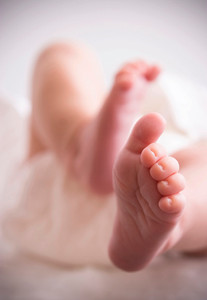 The importance of keeping your child’s feet healthy is crucial in possibly preventing potential foot problems later in life. There are simple tasks that can be accomplished daily that will promote healthy feet and may positively affect the overall health of the body. These may include washing and drying the feet daily, which may aid in avoiding athlete's foot from developing, in additional to choosing comfortable socks and shoes to wear. Research has shown that if shoes, which are worn have become too tight, bunions may develop if there is a pre-existing case present. This is known to be a painful condition in which a hard, bony growth develops on the side of the big toe and will typically make it necessary to wear larger size shoes that can accommodate the bunion. If you would like additional information about how to keep your child's feet healthy, it is recommended that you speak to a podiatrist who can provide the proper answers to your questions.
The importance of keeping your child’s feet healthy is crucial in possibly preventing potential foot problems later in life. There are simple tasks that can be accomplished daily that will promote healthy feet and may positively affect the overall health of the body. These may include washing and drying the feet daily, which may aid in avoiding athlete's foot from developing, in additional to choosing comfortable socks and shoes to wear. Research has shown that if shoes, which are worn have become too tight, bunions may develop if there is a pre-existing case present. This is known to be a painful condition in which a hard, bony growth develops on the side of the big toe and will typically make it necessary to wear larger size shoes that can accommodate the bunion. If you would like additional information about how to keep your child's feet healthy, it is recommended that you speak to a podiatrist who can provide the proper answers to your questions.
Making sure that your children maintain good foot health is very important as they grow. If you have any questions, contact one of our podiatrists of James Kutchback, DPM, CWS-P. Our doctors can provide the care you need to keep you pain-free and on your feet.
Keeping Children's Feet Healthy
Having healthy feet during childhood can help prevent medical problems later in life, namely in the back and legs. As children grow, their feet require different types of care. Here are some things to consider...
Although babies do not walk yet, it is still very important to take care of their feet.
Avoid putting tight shoes or socks on his or her feet.
Allow the baby to stretch and kick his or her feet to feel comfortable.
As a toddler, kids are now on the move and begin to develop differently. At this age, toddlers are getting a feel for walking, so don’t be alarmed if your toddler is unsteady or ‘walks funny’.
As your child gets older, it is important to teach them how to take care of their feet.
Show them proper hygiene to prevent infections such as fungus.
Be watchful for any pain or injury.
Have all injuries checked by a doctor as soon as possible.
Comfortable, protective shoes should always be worn, especially at play.
If you have any questions, please feel free to contact our offices located in The Woodlands and Woodville, TX . We offer the newest diagnostic and treatment technologies for all your foot care needs.



